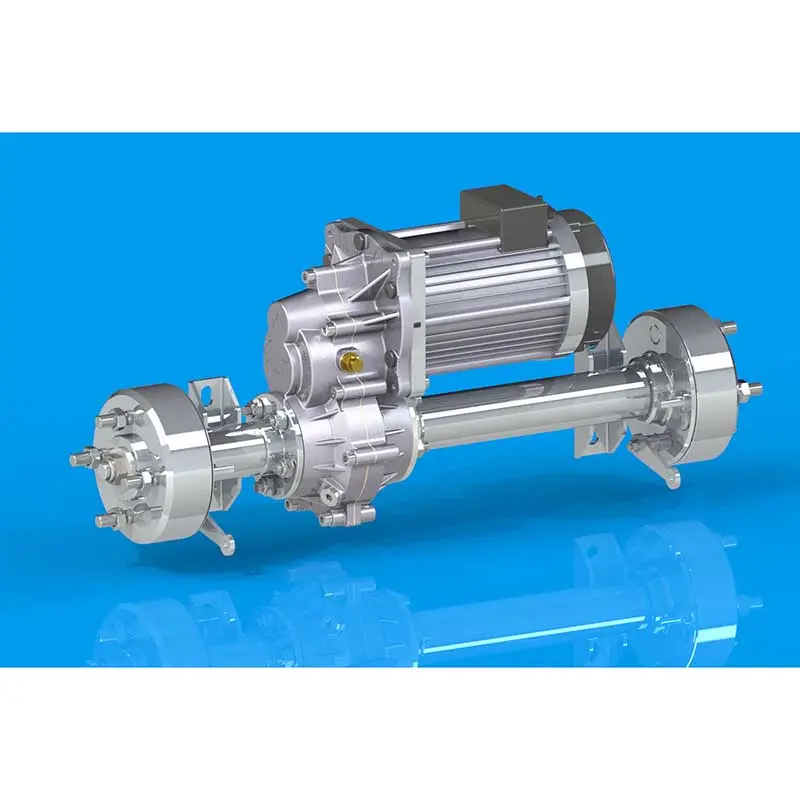If you’re a car owner, understanding your vehicle’s components is critical to proper maintenance and troubleshooting. A key part of a car’s drivetrain is the transaxle, which plays an important role in transferring power from the engine to the wheels. It’s important to know what type of transaxle your vehicle has to ensure it operates efficiently and identify any potential problems. In this article, we’ll explore the different types of transaxles and provide guidance on how to identify one in your vehicle.
What is a transaxle?
The transaxle is a major component of a front-wheel drive vehicle’s transmission system. It combines the functions of transmission, axle and differential into one integrated unit. Since the transaxle is located directly below the engine, this design allows for a more compact and efficient layout. In addition to front-wheel drive vehicles, some all-wheel drive and rear-wheel drive vehicles also use transaxles, albeit in different configurations.
Transaxle type
There are several types of transaxles commonly found in vehicles, each with its own unique characteristics and applications. The most common types include:
Manual transaxle: This type of transaxle is equipped with a manual transmission and requires the driver to manually shift gears using the clutch pedal. Manual transaxles are known for their simplicity and durability, making them popular among driving enthusiasts and performance-oriented vehicles.
Automatic Transaxle: An automatic transaxle has a transmission that shifts automatically, eliminating the need for manual shifting. This type of transaxle is commonly found in modern vehicles due to its convenience and ease of use.
Continuously Variable Transaxle (CVT): A CVT transaxle utilizes a belt and pulley system to provide an unlimited number of gear ratios for smooth, efficient power transfer. CVT transaxles are known for their fuel efficiency and seamless acceleration.
Identifying your transaxle
Now that we’ve covered the different types of transaxles, let’s discuss how to identify a transaxle in your vehicle. Here are some steps to help you determine the type of transaxle your car has:
Consult your vehicle manual: Your vehicle’s owner’s manual is a valuable resource for understanding your vehicle’s components, including the type of transaxle it is equipped with. The manual may provide specific details about the transaxle, including its model number and specifications.
Check the transmission label: In some cases, the type of transaxle installed in the vehicle will be indicated on a label on the transmission housing. This label provides information such as the transaxle’s make, model, and production date.
Online research: If you can’t find information about the transaxle in your vehicle’s owner’s manual or on the transmission label, it may be helpful to do online research. Many automotive forums and websites provide resources and discussions related to specific vehicle models and their transaxle configurations.
Get professional help: If you’re still unsure about the type of transaxle you have in your vehicle, consider consulting a qualified mechanic or automotive technician. These professionals have the expertise and knowledge to accurately identify the transaxle and provide maintenance and repair instructions.
Why it’s important to know your transaxle
Knowing the type of transaxle you have in your vehicle is crucial for a number of reasons. First, it allows you to select a transmission fluid and maintenance program appropriate for your transaxle type. Different transaxles may require different types of transmission fluid, and using the wrong transmission fluid can cause performance issues and potential damage.
Additionally, knowing your transaxle type is critical to diagnosing and solving any transmission-related issues. When calling a mechanic for help or troubleshooting the problem yourself, being able to accurately identify your transaxle can simplify the diagnostic process and ensure the correct parts and procedures are used for repairs.
In short, the transaxle is an important part of the vehicle’s transmission system, and understanding its type and characteristics is very important for vehicle maintenance and troubleshooting. By consulting your vehicle’s manual, checking the transmission label, doing online research, and seeking professional help, you can identify the transaxle in your vehicle and ensure it is running smoothly and efficiently. Armed with this knowledge, you can take proactive steps to maintain your transaxle and resolve any potential issues that may arise, ultimately extending the life of your vehicle and ensuring a reliable driving experience.
Post time: Apr-15-2024


